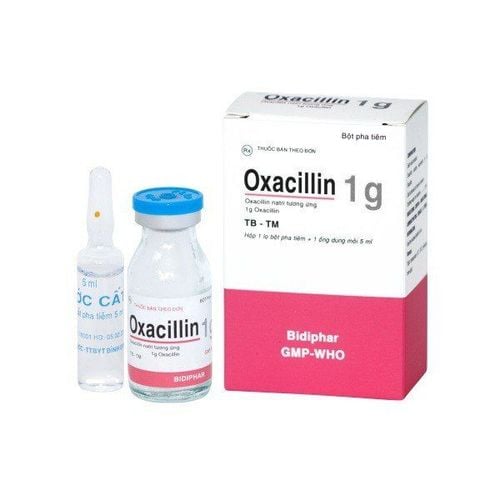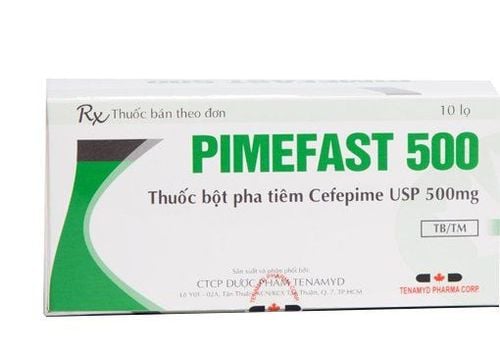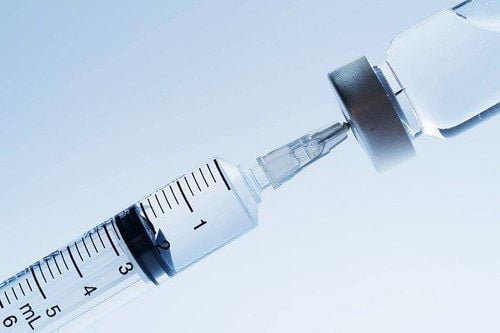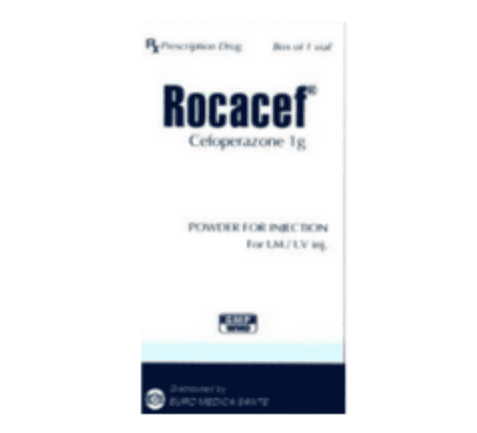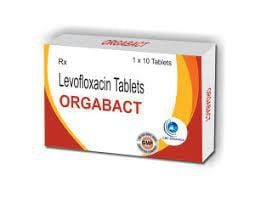This is an automatically translated article.
Faromen belongs to the group of antiparasitic, anti-infective, antifungal and antiviral drugs, containing the main ingredient is Meropenem trihydrate. Faromen is widely used for the treatment of infections in both adults and children caused by organisms susceptible to Meropenem.
1. What is Faromen?
Faromen drugs include the active ingredient Meropenem trihydrate powder for injection - a bactericidal agent that acts similar to Penicillin by inhibiting bacterial cell wall synthesis. This active substance has a broad spectrum of activity against Gram-positive and Gram-negative bacteria, aerobic and anaerobic. It is also stable to the hydrolysis of beta-lactams secreted by most bacterial species. Each box of Faromen medicine contains 1 vial of 500mg of powder for mixing and 1 tube of 10ml of sterile distilled water for injection.
Thanks to the use of Meropenem as above, Haromen is usually indicated for all ages in the following cases:
Pneumonia or hospital-acquired pneumonia; Urinary tract infections; Intra-abdominal infections; Gynecological infections such as endometritis or pelvic inflammatory disease; Skin and skin structure infections; Meningitis ; Sepsis; Empiric treatment of suspected bacterial infection in febrile neutropenic adults as monotherapy or in combination with other antiviral and antifungal agents. It is not recommended to use Faromen drug for the following subjects:
Patients with hypersensitivity to the drug's components, especially Meropenem; The patient is allergic to the active ingredient, the antibacterial agent Carbapenem or any of the excipients listed on the packaging. Severe hypersensitivity (anaphylaxis or severe skin reaction) to any other type of Beta-lactam antibacterial agent (Penicillin or Cephalosporin).
2. Instructions on how to use Faromen
How to use: Use Faromen intravenously. It can be used as monotherapy or in combination with other drugs to get the desired results.
Daily dose:
Adults:
Pneumonia, urinary tract infections, gynecological infections such as endometritis, skin and skin structure infections: 500mg dose of Haromen intravenously (IV) every 8 hours; Nosocomial pneumonia and peritonitis, suspected infection in patients with leukopenia, sepsis: 1g dose of Faromen intravenously (IV) every 8 hours; Cystic fibrosis: Doses can be up to 2g every 8 hours, most patients are treated with this dose; Meningitis: The recommended dose is 2g every 8 hours. Note: As with other antibiotics, extreme caution should be exercised when Haromen is used as monotherapy in cases of serious bacterial or suspected lower respiratory tract infection with Pseudomonas aeruginosa.
Regular susceptibility testing is recommended during the treatment of infections caused by Pseudomonas aeruginosa.
Dosage for adults with impaired renal function:
The dose should be reduced for patients with creatinine clearance (ClCr) < 51ml/min as follows:
ClCr from 26-50ml/min: Use 1 dose unit every 12 hours; ClCr 10-25ml/min: Use half a dose unit every 12 hours; ClCr less than 10ml/min: Use half a dose unit every 24 hours. Children:
Children from 3 months to 12 years: The recommended dose is 10-20mg/kg every 8 hours depending on the severity and type of infection, susceptibility of the pathogen and the health status of the disease. pediatric; Children > 50kg: The same dose is recommended for adults. The recommended dose for meningitis is 40 mg/kg every 8 hours. Overdose: Unintentional overdose may occur during treatment, especially in patients with renal impairment. In normal individuals, Faromen is rapidly eliminated by the kidneys; and in patients with renal impairment, hemodialysis will remove Meropenem and its metabolites.
3. Faromen side effects
Rarely serious adverse events. The following are adverse events reported in clinical trials:
Inflammation or pain at the injection site and thrombophlebitis; Systemic allergic reactions (hypersensitivity) have been reported very rarely with the use of Meropenem. These reactions also include angioedema and anaphylactic manifestations; Rash, itching, urticaria. Serious skin reactions such as erythema multiforme, Stevens-Johnson syndrome and toxic epidermal necrolysis are rare; Abdominal pain, nausea, vomiting, diarrhea or pseudomembranous colitis; Thrombocytopenia or eosinophilia, thrombocytopenia/leukopenia, and neutropenia (including agranulocytosis very rarely) can be treated. Hemolytic anemia is rare. A positive direct or indirect Coombs reaction may occur in some patients with decreased partial thromboplastin time; Increases serum Bilirubin, Transaminase, Alkaline Phosphatase or Lactic dehydrogenase levels alone or in combination; Headache, paresthesia and convulsions; Oral and vaginal candidiasis.
4. Notes when using Faromen
Currently there is some clinical and laboratory evidence of partial cross-allergy between other carbapenem antibiotics and beta-lactam antibiotics, penicillins and cephalosporins. Before initiating treatment with Faromen , the physician should be informed of the history of hypersensitivity reactions to beta-lactam antibiotics. If an allergic reaction to Meropenem occurs, the drug should be discontinued and appropriate measures taken; When using Faromen for patients with liver disease, it is necessary to carefully monitor Transaminase and Bilirubin levels; Caution should be exercised when co-administered with potentially nephrotoxic drugs; It is not recommended to use the drug in pregnant and lactating women because of the possible adverse drug reactions.
5. Interactions of drugs Faromen
Faromen may interact with Probenecid and anticoagulant drugs; Concomitant use of Meropenem and Valproic Acid/Sodium valproate/Valpromide is not recommended. The basic information about Faromen in the above article is for reference only. Because Faromen is a prescription drug, patients should not use it on their own, but need to contact a specialist directly for a suitable prescription to ensure safety for health.




